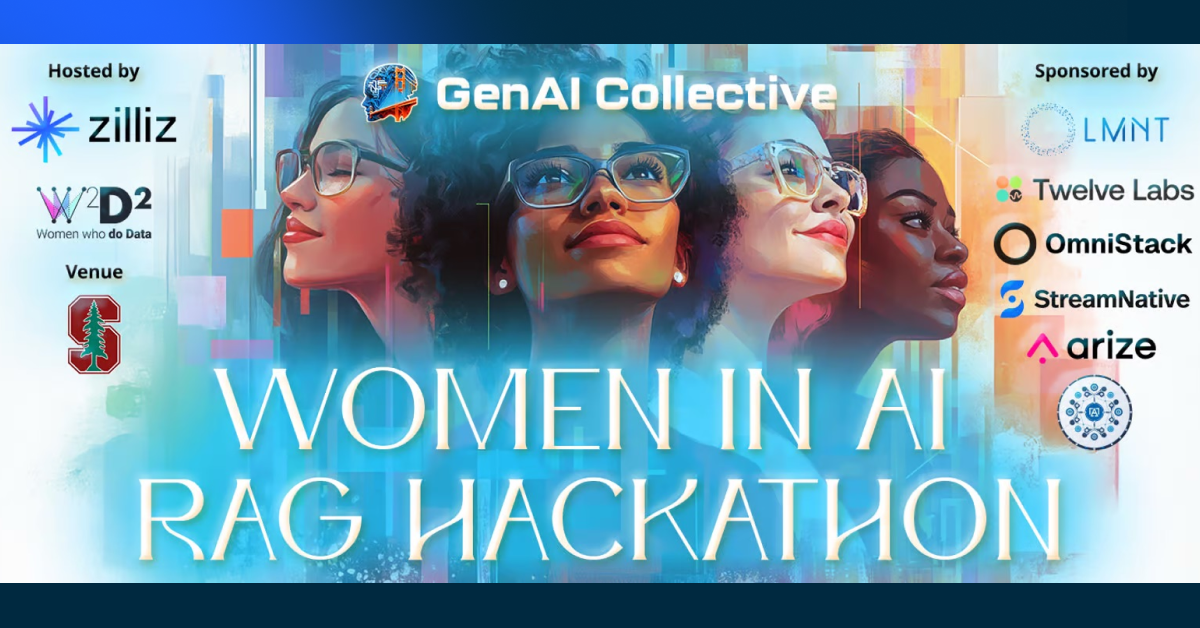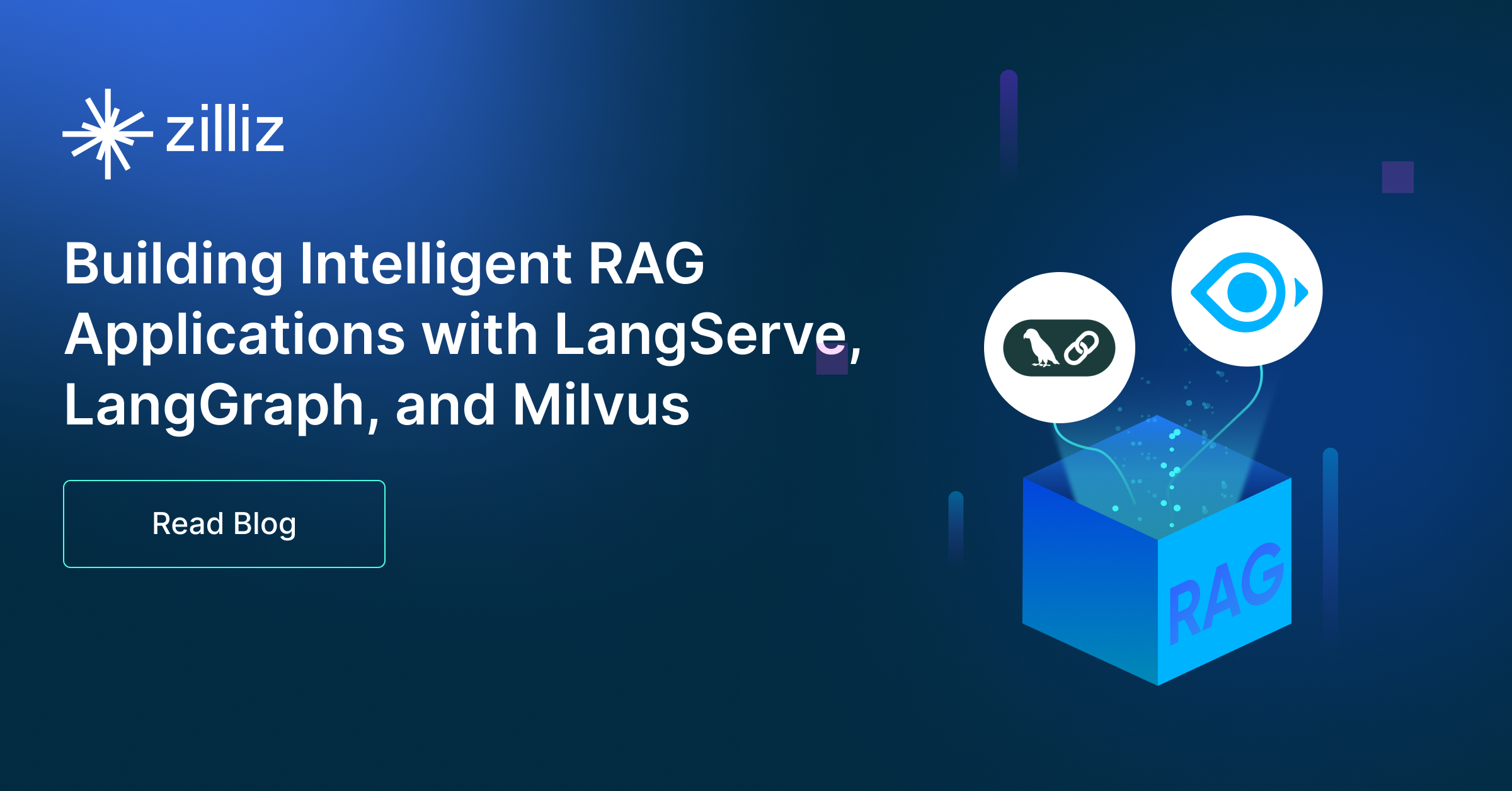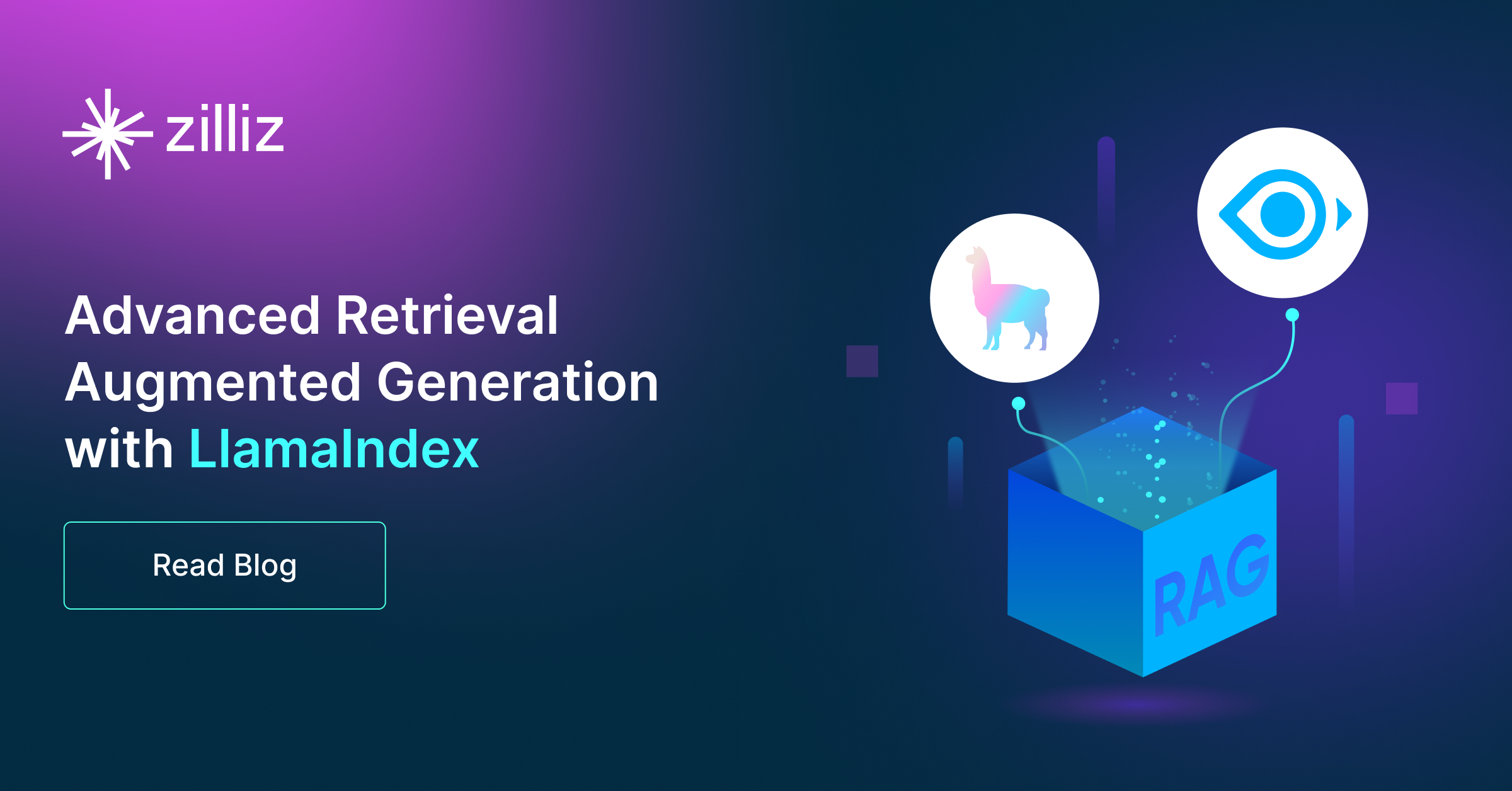Build RAG Chatbot with LangChain, LangChain vector store, Google Vertex AI Gemini 1.5 Flash, and IBM multilingual-e5-large
Introduction to RAG
Retrieval-Augmented Generation (RAG) is a game-changer for GenAI applications, especially in conversational AI. It combines the power of pre-trained large language models (LLMs) like OpenAI’s GPT with external knowledge sources stored in vector databases such as Milvus and Zilliz Cloud, allowing for more accurate, contextually relevant, and up-to-date response generation. A RAG pipeline usually consists of four basic components: a vector database, an embedding model, an LLM, and a framework.
Key Components We'll Use for This RAG Chatbot
This tutorial shows you how to build a simple RAG chatbot in Python using the following components:
- LangChain: An open-source framework that helps you orchestrate the interaction between LLMs, vector stores, embedding models, etc, making it easier to integrate a RAG pipeline.
- LangChain in-memory vector store: an in-memory, ephemeral vector store that stores embeddings in-memory and does an exact, linear search for the most similar embeddings. The default similarity metric is cosine similarity, but can be changed to any of the similarity metrics supported by ml-distance. It is intended for demos and does not yet support ids or deletion. (If you want a much more scalable solution for your apps or even enterprise projects, we recommend using Zilliz Cloud, which is a fully managed vector database service built on the open-source Milvusand offers a free tier supporting up to 1 million vectors.)
- Google Vertex AI Gemini 1.5 Flash: An advanced AI model designed for real-time applications, Gemini 1.5 Flash is optimized for speed and responsiveness in predictive analytics and NLP tasks. Its strengths lie in generating insights rapidly while ensuring accuracy, making it ideal for use cases in customer service automation and dynamic content generation.
- IBM multilingual-e5-large: This advanced AI model excels in natural language processing across multiple languages. Designed for tasks such as text generation, translation, and sentiment analysis, it exhibits strong contextual understanding and fluency. Ideal for global enterprises seeking to enhance customer interaction and automate multilingual communication.
By the end of this tutorial, you’ll have a functional chatbot capable of answering questions based on a custom knowledge base.
Note: Since we may use proprietary models in our tutorials, make sure you have the required API key beforehand.
Step 1: Install and Set Up LangChain
%pip install --quiet --upgrade langchain-text-splitters langchain-community langgraph
Step 2: Install and Set Up Google Vertex AI Gemini 1.5 Flash
pip install -qU "langchain[google-vertexai]"
# Ensure your VertexAI credentials are configured
from langchain.chat_models import init_chat_model
llm = init_chat_model("gemini-1.5-flash", model_provider="google_vertexai")
Step 3: Install and Set Up IBM multilingual-e5-large
pip install -qU langchain-ibm
import getpass
import os
if not os.environ.get("WATSONX_APIKEY"):
os.environ["WATSONX_APIKEY"] = getpass.getpass("Enter API key for IBM watsonx: ")
from langchain_ibm import WatsonxEmbeddings
embeddings = WatsonxEmbeddings(
model_id="intfloat/multilingual-e5-large",
url="https://us-south.ml.cloud.ibm.com",
project_id="<WATSONX PROJECT_ID>",
)
Step 4: Install and Set Up LangChain vector store
pip install -qU langchain-core
from langchain_core.vectorstores import InMemoryVectorStore
vector_store = InMemoryVectorStore(embeddings)
Step 5: Build a RAG Chatbot
Now that you’ve set up all components, let’s start to build a simple chatbot. We’ll use the Milvus introduction doc as a private knowledge base. You can replace it with your own dataset to customize your RAG chatbot.
import bs4
from langchain import hub
from langchain_community.document_loaders import WebBaseLoader
from langchain_core.documents import Document
from langchain_text_splitters import RecursiveCharacterTextSplitter
from langgraph.graph import START, StateGraph
from typing_extensions import List, TypedDict
# Load and chunk contents of the blog
loader = WebBaseLoader(
web_paths=("https://milvus.io/docs/overview.md",),
bs_kwargs=dict(
parse_only=bs4.SoupStrainer(
class_=("doc-style doc-post-content")
)
),
)
docs = loader.load()
text_splitter = RecursiveCharacterTextSplitter(chunk_size=1000, chunk_overlap=200)
all_splits = text_splitter.split_documents(docs)
# Index chunks
_ = vector_store.add_documents(documents=all_splits)
# Define prompt for question-answering
prompt = hub.pull("rlm/rag-prompt")
# Define state for application
class State(TypedDict):
question: str
context: List[Document]
answer: str
# Define application steps
def retrieve(state: State):
retrieved_docs = vector_store.similarity_search(state["question"])
return {"context": retrieved_docs}
def generate(state: State):
docs_content = "\n\n".join(doc.page_content for doc in state["context"])
messages = prompt.invoke({"question": state["question"], "context": docs_content})
response = llm.invoke(messages)
return {"answer": response.content}
# Compile application and test
graph_builder = StateGraph(State).add_sequence([retrieve, generate])
graph_builder.add_edge(START, "retrieve")
graph = graph_builder.compile()
Test the Chatbot
Yeah! You've built your own chatbot. Let's ask the chatbot a question.
response = graph.invoke({"question": "What data types does Milvus support?"})
print(response["answer"])
Example Output
Milvus supports various data types including sparse vectors, binary vectors, JSON, and arrays. Additionally, it handles common numerical and character types, making it versatile for different data modeling needs. This allows users to manage unstructured or multi-modal data efficiently.
Optimization Tips
As you build your RAG system, optimization is key to ensuring peak performance and efficiency. While setting up the components is an essential first step, fine-tuning each one will help you create a solution that works even better and scales seamlessly. In this section, we’ll share some practical tips for optimizing all these components, giving you the edge to build smarter, faster, and more responsive RAG applications.
LangChain optimization tips
To optimize LangChain, focus on minimizing redundant operations in your workflow by structuring your chains and agents efficiently. Use caching to avoid repeated computations, speeding up your system, and experiment with modular design to ensure that components like models or databases can be easily swapped out. This will provide both flexibility and efficiency, allowing you to quickly scale your system without unnecessary delays or complications.
LangChain in-memory vector store optimization tips
LangChain in-memory vector store is just an ephemeral vector store that stores embeddings in-memory and does an exact, linear search for the most similar embeddings. It has very limited features and is only intended for demos. If you plan to build a functional or even production-level solution, we recommend using Zilliz Cloud, which is a fully managed vector database service built on the open-source Milvus and offers a free tier supporting up to 1 million vectors.)
Google Vertex AI Gemini 1.5 Flash optimization tips
Gemini 1.5 Flash is optimized for low-latency inference, making it ideal for real-time RAG applications. Improve efficiency by filtering out low-relevance documents before retrieval, ensuring optimal token usage. Use structured prompts with clear formatting to enhance response clarity. Keep temperature between 0.1 and 0.2 for accuracy, fine-tuning top-p as needed. Leverage Google’s AI infrastructure for dynamic scaling to handle fluctuating workloads. Implement caching for common queries to reduce redundant processing. In a multi-model deployment, use Gemini 1.5 Flash for fast responses while reserving Pro models for deeper reasoning.
IBM multilingual-e5-large optimization tips
To optimize the IBM multilingual-e5-large model for use in a Retrieval-Augmented Generation (RAG) setup, consider fine-tuning the model on domain-specific data to improve relevance and coherence during generation. Maintain balanced retrieval by leveraging diverse and high-quality datasets to enhance the quality of context provided to the model. Implement caching mechanisms for commonly requested queries to minimize latency and improve response times. Monitor prompt design closely, ensuring they are concise and context-rich to guide the model effectively. Lastly, integrate user feedback to iteratively refine the retrieval and generation processes, thereby enhancing overall performance and user satisfaction.
By implementing these tips across your components, you'll be able to enhance the performance and functionality of your RAG system, ensuring it’s optimized for both speed and accuracy. Keep testing, iterating, and refining your setup to stay ahead in the ever-evolving world of AI development.
RAG Cost Calculator: A Free Tool to Calculate Your Cost in Seconds
Estimating the cost of a Retrieval-Augmented Generation (RAG) pipeline involves analyzing expenses across vector storage, compute resources, and API usage. Key cost drivers include vector database queries, embedding generation, and LLM inference.
RAG Cost Calculator is a free tool that quickly estimates the cost of building a RAG pipeline, including chunking, embedding, vector storage/search, and LLM generation. It also helps you identify cost-saving opportunities and achieve up to 10x cost reduction on vector databases with the serverless option.
 Calculate your RAG cost
Calculate your RAG cost
What Have You Learned?
By now, you’ve unlocked the magic of building a RAG system from the ground up! You learned how LangChain acts as the backbone, seamlessly connecting your pipeline’s components with its flexible framework. The LangChain Vector Store became your go-to for lightning-fast retrieval, organizing and querying data with precision. Google’s Vertex AI Gemini 1.5 Flash blew you away with its ability to generate human-like responses, turning raw information into meaningful answers. And IBM’s multilingual-e5-large embedding model added superpowers to your system, capturing semantic meaning across languages and transforming text into rich vectors that make retrieval smarter. Together, these tools showed you how to create a dynamic RAG pipeline—ingesting data, retrieving context, and generating answers that feel almost human. You even picked up pro tips for optimizing performance, like tweaking chunking strategies or balancing speed with accuracy, ensuring your system runs smoothly and cost-effectively. Plus, that free RAG cost calculator? A game-changer for budgeting your projects without guesswork!
Think about what you’ve just accomplished: you’ve stitched together cutting-edge technologies into a cohesive, intelligent system. But this is just the beginning! Whether you’re building chatbots, research tools, or multilingual assistants, you now have the toolkit to innovate fearlessly. Experiment with different datasets, fine-tune models for niche use cases, or explore hybrid retrieval approaches. The world of RAG is yours to shape. So go ahead—fire up your IDE, tweak those parameters, and let your creativity run wild. Every line of code you write brings us closer to smarter, more intuitive AI. Ready to make waves? Start building, optimize like a pro, and show the world what your RAG-powered ideas can do. The future’s waiting, and you’re already ahead of the curve! 🚀
Further Resources
🌟 In addition to this RAG tutorial, unleash your full potential with these incredible resources to level up your RAG skills.
- How to Build a Multimodal RAG | Documentation
- How to Enhance the Performance of Your RAG Pipeline
- Graph RAG with Milvus | Documentation
- How to Evaluate RAG Applications - Zilliz Learn
- Generative AI Resource Hub | Zilliz
We'd Love to Hear What You Think!
We’d love to hear your thoughts! 🌟 Leave your questions or comments below or join our vibrant Milvus Discord community to share your experiences, ask questions, or connect with thousands of AI enthusiasts. Your journey matters to us!
If you like this tutorial, show your support by giving our Milvus GitHub repo a star ⭐—it means the world to us and inspires us to keep creating! 💖
- Introduction to RAG
- Key Components We'll Use for This RAG Chatbot
- Step 1: Install and Set Up LangChain
- Step 2: Install and Set Up Google Vertex AI Gemini 1.5 Flash
- Step 3: Install and Set Up IBM multilingual-e5-large
- Step 4: Install and Set Up LangChain vector store
- Step 5: Build a RAG Chatbot
- Optimization Tips
- RAG Cost Calculator: A Free Tool to Calculate Your Cost in Seconds
- What Have You Learned?
- Further Resources
- We'd Love to Hear What You Think!
Content
Vector Database at Scale
Zilliz Cloud is a fully-managed vector database built for scale, perfect for your RAG apps.
Try Zilliz Cloud for Free


